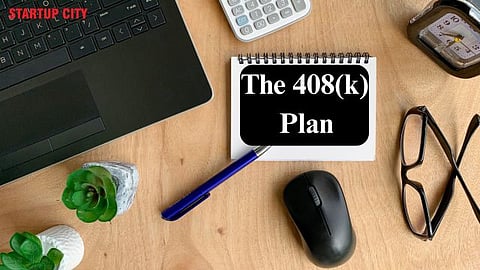

When it comes to retirement planning, the 408(k) plan, also known as a simplified employee pension (SEP) plan, offers a straightforward and uncomplicated approach to saving. Similar to an individual retirement account (IRA), it allows employees to set aside pre-tax income for their future financial security.
Now, let's delve into the fundamentals of the 408(k) plan, its advantages, and distinctive features that differentiate it from others.
A 408(k) plan, also termed a simplified employee pension (SEP) plan, is a retirement savings arrangement sponsored by employers. It allows employees to designate pre-tax earnings for retirement, much like an individual retirement account (IRA).
One of the key benefits of a 408(k) plan is that contributions grow tax-deferred until withdrawal, typically after reaching the age of 59½. Unlike traditional IRAs, only employer contributions are allowed in the 408(k) plan, with identical contribution limits for both employers and self-employed individuals.
This plan is a smart choice for businesses of all sizes and self-employed individuals looking for a tax-efficient retirement savings solution.
Additionally, it functions as the SEP variant of the well-known 401(k) plan. However, the Internal Revenue Service (IRS) sets limits on the maximum employer contributions to employees' 408(k) plans, ensuring adherence to regulatory standards.
Section 408(k) of the Internal Revenue Code (IRC) outlines the rules governing SEP and salary reduction simplified employee pension (SARSEP) accounts, which primarily encompass individual retirement accounts (IRAs) or individual retirement annuities. As a result, SEP plans are commonly referred to as 408(k) plans.
The IRC sets forth the criteria for eligibility to participate in a 408(k) plan, which extends to small businesses of any size and self-employed individuals. Eligibility depends on being at least 21 years old, having worked for the employer for a minimum of three out of the last five years, and receiving compensation of at least $650 from the employer (adjusted to $750 for 2023).
Annual employer contributions are limited to 25% of the employee's pay or $69,000 for 2024. The compensation limit is set at incomes below $305,000 for 2022 ($330,000 for 2023). The maximum deduction allowed on a business tax return for contributions is determined by the lesser of the total contributions into employees' accounts or 25% of compensation.
Plan holders can withdraw funds from their 408(k) plans at their discretion, akin to traditional IRAs, subject to specific conditions. Generally, withdrawals occur after reaching the age of 59½, with any distributions before this age incurring a 10% early withdrawal penalty. Withdrawals are also mandated as required minimum distributions (RMDs).
As previously mentioned, a 408(k) plan is one type of employer-sponsored retirement plan, while the 401(k) plan is the predominant choice offered by the majority of American corporations. The 401(k) plan allows taxpayers to contribute pre-tax funds through automatic payroll deductions, often complemented by employer matches for participating employees.
Revisions to these plans have resulted in several favourable changes for employees, including reduced fees and expanded investment options. The average 401(k) plan now provides over two dozen investment choices, tailored to balance risk and reward according to employee preferences.
Unlike a SEP, employees have the opportunity to contribute to a 401(k) plan. Moreover, self-employed individuals or couples can select a solo 401(k) plan, featuring the same total contribution limits as employer-sponsored plans.
Participation in traditional 401(k) plans continues to steadily rise. By September 2022, these plans collectively held approximately $6.3 trillion in assets, representing more than half of the retirement market in the United States. During the same period, there were 625,000 active plans nationwide, benefiting a total of 60 million former employees and retirees.
In summary, the 408(k) plan stands out for its simplicity and tax benefits. By grasping its eligibility requirements, contribution limits, and how it compares to other plans, individuals can empower themselves to make informed financial decisions.